It’s not easy working out what to pack for a skiing holiday. But we know a few things about it. We’ve been packing for the slopes for many years and fly to the Alps most weeks during the winter.
Beating the 20kg (or 15kg) airline luggage allowance limit takes a bit of planning. But it does help if you’ve got a toasty warm bed waiting for you at the other end.
So here is our ski trip packing list of 18 top tips every skier should have at the ready when packing, whether you’re preparing for a school trip, New Year ski holiday or half term family break.
1. Bring LOTS of socks and undies
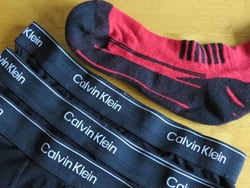
Socks are important too – especially the ones you wear in your ski boots. Most people swear by specialist skiing socks, although some find they can get away with well-fitting, everyday socks in their boots. Either way, you need lots of pairs, and that’s especially true if you plan to hire ski boots, because the liners may have already been home to many other pairs of feet.
Ideally, you want a pair of socks for every day of the trip, plus a couple of spares, although you can get away with a three if you take travel wash (see below).
2. And at least two sets of ski base layers
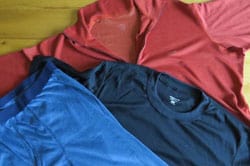
If you can’t be bothered with washing, three pairs will just about see you through a normal week.
Wool-based base layers, such as those made by Ice Breaker, get less whiffy, but aren’t quite as good at keeping you dry. You might just get away with one pair over the course of a week: but you’re better off with two.
3. Travel wash if you don’t want to smell

In fact, take a tube anyway; because there’s always the danger someone else in your party will think it’s okay to dry out their sweaty ski socks on the radiators at the end of the skiing day. In which case, you can lend them the means to wash them. Or threaten to take the offending articles outside and burn them instead…
4. Pack sunscreen and lippy to avoid drying out

Don’t for one moment imagine you can do without it: unless you want skin the colour of beetroot. It may be winter, but up in the mountains the atmosphere is thinner, and the effect of any sunshine in magnified by the reflective power of the snow.
Lip balm is important too – because lips dry out very quickly in the dry mountain air.
5. Then there’s your toiletries (and a few extras)

Most hotels and chalets supply free shower gel, shampoo and body lotion, but you might prefer to bring your favourite brands from home – and this is essential if you’re staying in budget accommodation, as soap supplies are often pretty rudimentary, or non-existent.
6. And all your ski gear, of course
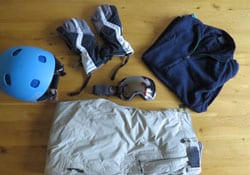
But in essence you’ll need to pack: thermal layers (fleeces or thin lambswool jumpers you can wear on top of one another to keep warm), waterproof but breathable ski trousers, ski gloves, goggles, sun glasses (optional), your ski helmet, ski boots (if you’ve got your own), and any other protective gear or knee braces, if required. Also, don’t forget your avalanche safety gear if you’re planning to ski off-piste.
7. But not your ski jacket – you’ll be wearing that on the plane
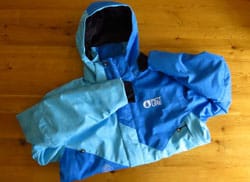
It looks a bit naff in the departure lounge, but who cares when you’ve got all those useful pockets in which to store wallet, phone, boarding passes and passport? It’s also fun to watch as everyone else goes diving into the bottom of their suitcases once you emerge from the airport into the brisk Alpine air.
8. You’ll be wearing your walking boots, too
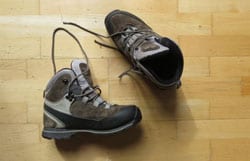
But again: don’t pack them in your suitcase if you’re flying. Wear them onto the plane.
9. Pack fewer ordinary clothes than normal
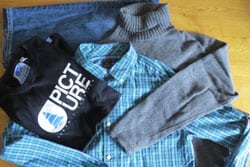
Pack one spare pair of trousers, no more than a couple of jumpers, and a few t-shirts and tops. And leave the glad rags at home. After all, you’ll be in a ski resort. A shirt and jeans is as smart as it ever gets.
10. But do bring your PJs and slippers
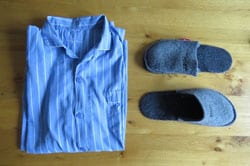
Slippers are another treat – especially if you’re going on a chalet holiday, because you’ll be asked to leave your shoes at the front door.
11. You’ll need a beanie hat (but not for skiing)

But what about when you’re going out for dinner, drinks, tobogganing or even a snowball fight? Don’t forget your bobble hat if you want to keep your ears warm…
12. Your swimmers are handy if there’s a hot tub
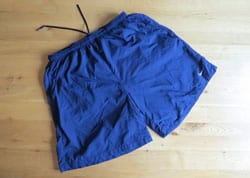
Even if your accommodation doesn’t have a pool, your ski resort may have a big communal one. So check what’s on offer before you go – keep an eye out for hot tubs too – and take your bathers if there’s the chance of a dip.
13. A flask will save you £££
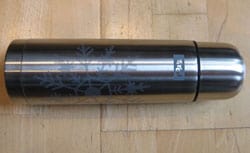
But if you want to save yourself from the steady drip-drip of on-mountain expenditure, why not fill a flask and have a piste-side cuppa in the sunshine instead?
14. Plug adapters: the gadget everyone forgets

If you don’t already have an adaptor of your own, you can pick them up at the airport, on the ferry or before you get to the entrance of the Channel Tunnel. Spend some extra cash and you can even get one that will cover you all over the world.
15. Roll your clothes, don’t fold them

We suggest you start by rolling rather than folding your clothing. Doing so will compress your gear whilst making it easier to stack and pack into a tiny section of your bag or suitcase. This can save oodles of space in your suitcase, allowing you to fill in gaps between certain items to take full advantage of the space.
16. Fill your helmet with fragile items
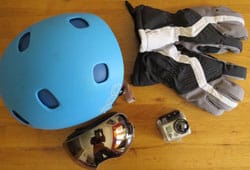
Don’t pack ordinary digital cameras this way (the display screens have a nasty habit of cracking in transit), nor goggles with fancy iridium coatings, which are very vulnerable to scratching. Pack them in their hard protective cases instead.
17. Put some heavy stuff in your rucksack
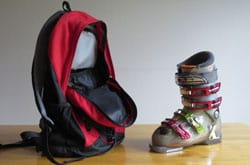
Admittedly both probably won’t go, and most specialist ski boot bags are too deep to qualify as cabin baggage on many airlines in any case. However, boot bags and skis travel free on Swiss – so consider them as your airline of choice. Pack a t-shirt and a fresh pair of underwear in there too, in case your flight is delayed.
18. Use plastic bags for waterproofing

And the thing about water is: it’s wet, and has a nasty habit of finding its way through zips. Pack plastic bags around your clothing inside your suitcase to keep them dry. This also doubles as a handy method for compartmentalising you thermals, underwear, t-shirts, and so on.
19. Don’t forget these essentials (bonus)
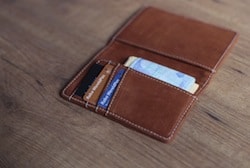
Meanwhile, Kate Mann recommends Compeed Blister Plasters to alleviate any ski boot soreness (then again, maybe it’s time you took a long, hard look at your ski boot liners?).
Oh yeah, and don’t forget your wallet including passport, credit, debit and EHIC cards (while it is available), plus some proof of a quality ski insurance policy – thanks to you, Paul Braiden!
Anything missing?
With any luck, that covers everything you should you pack for a ski holiday, plus some handy pro tips too. Getting it right will make all the difference to your skiing comfort.
Why not bookmark this page so you can come straight back to it before you next head to the Alps? And if you think it’s missing something, please add your suggestions in the comments box below. If they’re good, we’ll include them in the list with full credit given to you. Happy packing!










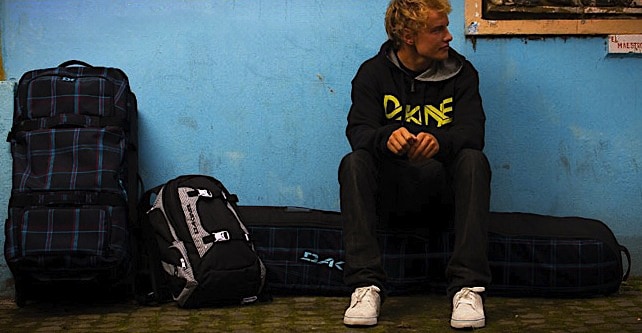


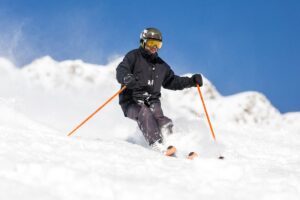
I see that your recommended “flask” is a thermos. Personally I recommend a hipflask chock full of brandy. keeps you warm if nothing else!
No doubt it does, and a touch of Dutch courage before tackling that mogul field can’t hurt either (in moderation of course!). Great tip, thanks for sharing.
On the subject of travel wash, check out ‘Dr Bronner’s Magic Soap’ – not widely available in the UK (although available on Amazon) but an excellent travel companion with that claims to have 18 different uses.
Can’t vouch for all 18 but certainly came in handy as an all-purpose body wash/shampoo/laundry detergent over many a season in the Alps. I even used it as toothpaste once in a pinch; wasn’t as bad as you’d think!
Can’t say I’ve heard of it before, but will be sure to check it out before the snow starts falling.
Hate to point out the obvious, but… what about Euros?
Obvious certainly, and all the more reason to kick yourself if you forget it! Thanks for pointing it out Ben – I’ll request that it be added to the article.
What about Compede – to assist with boot problems!
Good idea, there’s nothing worse than sore feet after a long day riding the lifts. The Welove2ski team have kindly added your suggestion in, good work!
Add passport credit/debit cards and EIHC card? I once arrived in Boston USA on a business trip without my wallet – left on the dressing table as I crept out in the early hours trying not to wake my wife!
There’s not much worse than that, is there? It’s bad enough to be the one who holds everyone up on the first day of a group ski holiday by leaving his lift pass in the chalet.
I doubt friends would be as understanding (or as willing to wait) at Heathrow Terminal 1 if you arrived without a passport!
The Welove2ski team have added your pretty essential advice into the article. Thanks for contributing.
Try merino wool base layer n socks no need to wash just rinse out in warm water I take 3 pairs one pair on, one pair clean, one pair drying. (Bacteria doesn’t live on merino wool so no smell). Check out ski socks at ld mountain centre.Com
Thanks for commenting Mike. Think Andy covered that one though – check out #2 again.
We’ve also published an in-depth guide on the subject of base layers over here, for anyone interested: https://welove2ski.com/ski-base-layers
Putting smaller fragile items, socks, underwear & rolled up base layers inside your ski boots works a treat for me. I also always pack cable ties for securing luggage zips & a few carabiners to hook gloves, googles, helmet etc on to. To save money, I pack lots of muesli bars & a few plastic bags help, especially if skiing on the last day & you’ve got wet gear to pack.
This is my first skiing trip and found your stress free steps for packing for this holiday in Italy most useful. thank you. Lydia
We’re pleased it was helpful Lydia.
Great advice, just a tip for plug adaptors; we take a short extension lead nowadays, due to all the electrical items that need charging, it works a treat.
What bag do you take? A handbag or a backpack or what?
I leave my handbag at home and take the rucksack that I use on the mountain on the plane. I also have two purses one for English money and one for Euros.